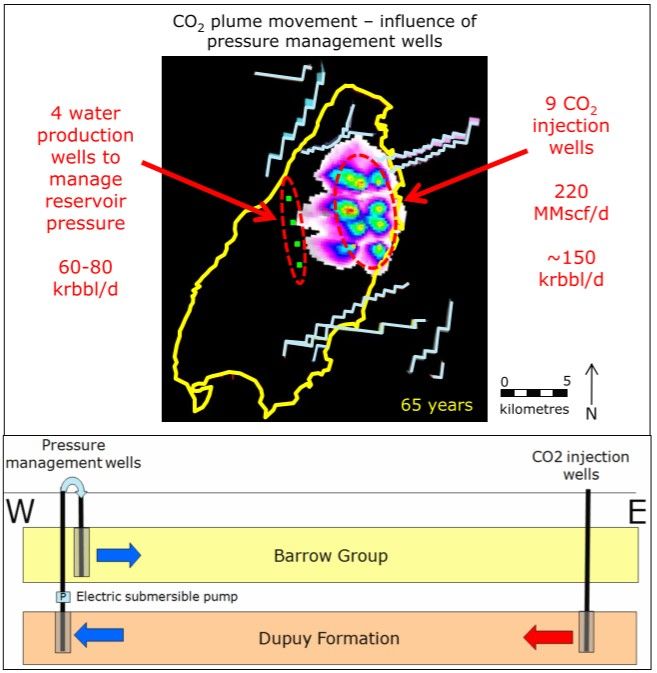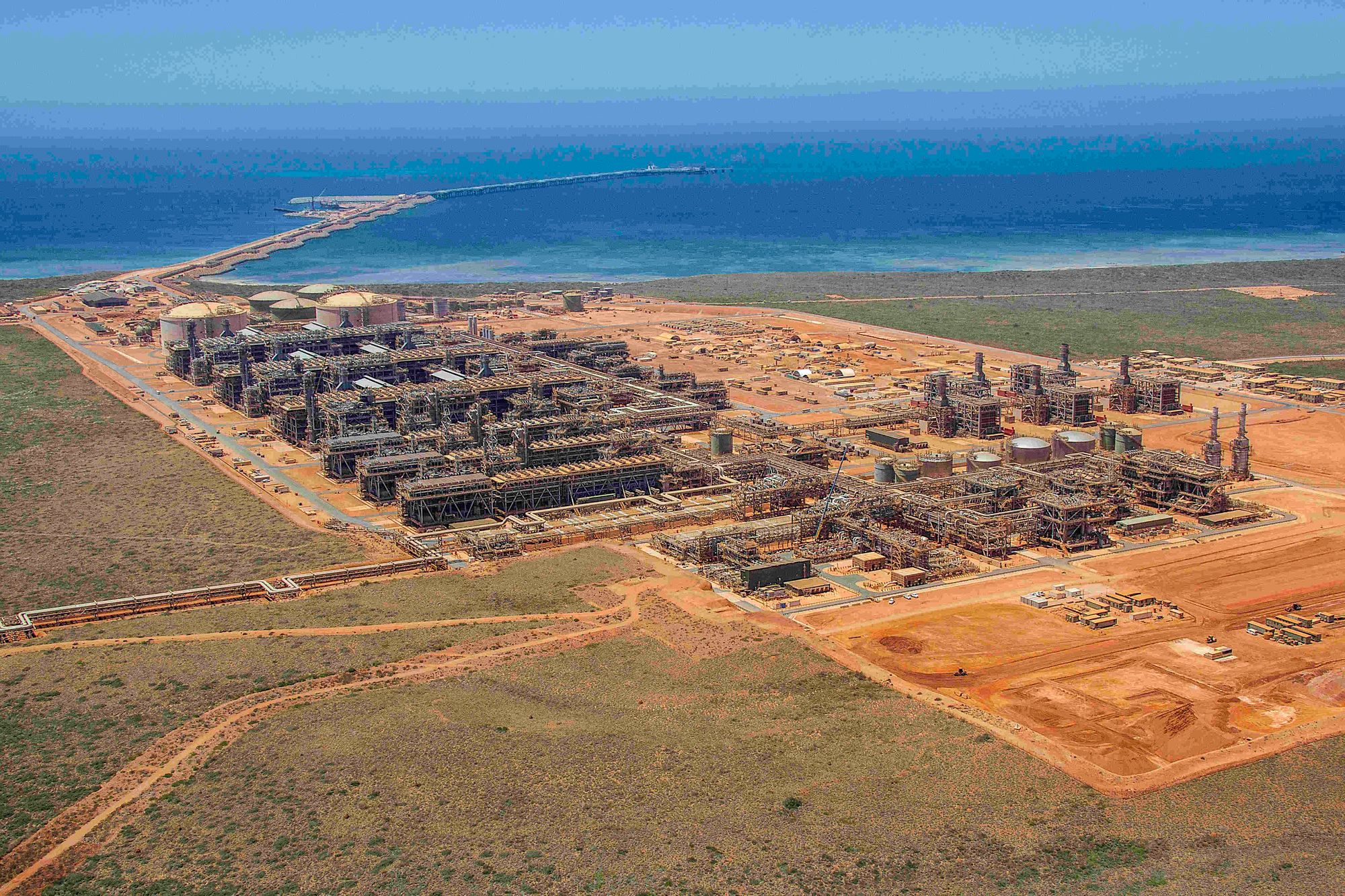Gas seeping to surface from Chevron's Barrow Island oil operation
The WA environment regulator is investigating unknown amounts of hydrocarbons rising to the surface on the Class A nature reserve.
The WA safety regulator has told Chevron to turn down Australia's $3.1 billion showpiece Gorgon LNG carbon capture and storage system until problems are fixed, meaning carbon emissions will rise.

EXCLUSIVE
Greenhouse gas emissions from Chevron's Gorgon LNG project will increase after the safety regulator curtailed burial of carbon dioxide as wells to control underground pressure are not working.
Documents obtained by a Boiling Cold freedom of information request reveal Chevron and its main partners Shell and ExxonMobil have spent $3.1 billion ($US2.4 billion) to mid-2020 on the showpiece carbon storage project, and still, there are costly problems.
Before Chevron fired up the CO2 injection system in August 2019 it needed the safety regulator's approval because one of its main components was out of action: wells to move water out of the underground formation that will store the CO2. They are still not working.
CO2 injection started more than three years after Gorgon first produced LNG because water in the CO2 corroded pipework. That problem caused an additional seven million tonnes of CO2 to be vented to the atmosphere.
Gorgon is the world's largest carbon capture and storage system dedicated to reducing greenhouse gases instead of injecting CO2 to boost oil production. The delayed start-up was a blow to the credibility of CCS that is one of five technologies the Federal Government is relying on to lower emissions.
The ongoing problems revealed by Boiling Cold will add to concerns about how easily and quickly CCS can be deployed more widely. Chevron started studying how to store the high amounts of CO2 in the Gorgon gas field in 1998.

Attempting to bury four million tonnes of CO2 a year under Barrow Island is not simple. CO2 is injected into a layer of sandstone about 400m thick more than 2000m underground, and about 4km away water is pumped to the surface from the same layer to make room for the CO2. This water is then pumped into a different layer of rock above the CO2.
If the water is not moved the pressure required to inject the CO2 will rise and reduce the amount of CO2 that can be stored, and eventually risk fracturing the rock around the CO2 injection wells.
In May 2019 Chevron tested the wells that inject the water back underground and struck problems. Chevron thought that debris leftover from the drilling of the well was blocking the flow of water.
The WA Department of Mines, Industry Regulation and Safety allowed Chevron to begin injecting CO2 in August 2019 without the so-called the pressure management system, provided it started operating by December 2019.
In December 2019 DMIRS granted an extension to May 2020 and at that milestone Chevron was given another seven months to December 2020.
DMIRS then granted the US-major a further six months to June 2021 to fix the pressure management system, but this time it capped the level of CO2 injection and increased reporting requirements.
The regulator would not reveal the CO2 injection cap that would have indicated the resultant increase in carbon emissions from what Chevron termed "additional short-term CO2 venting."
DMIRS resource and environmental compliance division director Karen Caple said the Department considered there was a low likelihood that continued injection of CO2 without the pressure management system would adversely impact the system's long-term performance.
"DMIRS is closely monitoring Chevron's progress on the CO2 injection system and will modify approval conditions if required, if the risks change," Caple said.
Chevron now believes sand in the water is blocking the well that reinjects water underground. The company has told DMIRS it will install equipment to extract the "significant volume of sand" from the water before it is reinjected underground. The Department of Water and Environment Regulation will regulate the disposal of the sand, as it does with all other liquid and solid waste on Barrow Island.
The sand was a known risk, and Chevron targeted its water extraction at depths thought not to have weak zones prone to sand production.
Chevron expects to start up the pressure management system before mid-2021, a company spokesperson said. This would be almost two years after CO2 injection began.
"We are pleased with the performance and how safely and reliably the injection system is operating," a Chevron spokesperson said.
"Like any pioneering endeavour, the carbon capture sequestration system has presented some challenges."
Chevron aimed to share what it learned at Gorgon to "support the increased deployment and cost-effectiveness of carbon capture and storage in Australia and globally."

The WA Government requires that at least 80 per cent of the CO2 in reservoirs that supply the $US54 billion Gorgon LNG plant is buried in any five-year period, the first of which expires in July 2021.
An interpretation of the requirement that excluded some of the vented CO2 from two of Gorgon's three LNG trains will reduce the calculated deficit.
The WA Government has in the past said no action would be taken against Chevron until the five-year period had ended.
The Gorgon project received $60 million from the Federal Government for the CO2 injection system, all of which was claimed before the failed initial start up of the system in 2017.
Chevron reports from Boiling Cold freedom of information request
Annual report to the Australian Government
Gorgon Project Carbon Dioxide Injection Project Low Emissions Technology Demonstration Fund Annual Report 1 July 2019 – 30 June 2020
Annual report to the Western Australian Government
A suite of documents about the environmental performance of Gorgon is also available.
Main image: Gorgon CO2 injection wells with LNG plant in background. Source: Chevron 2020 Gorgon CO2 injection report to Federal Government
All the info and a bit of comment on WA energy and climate every Friday